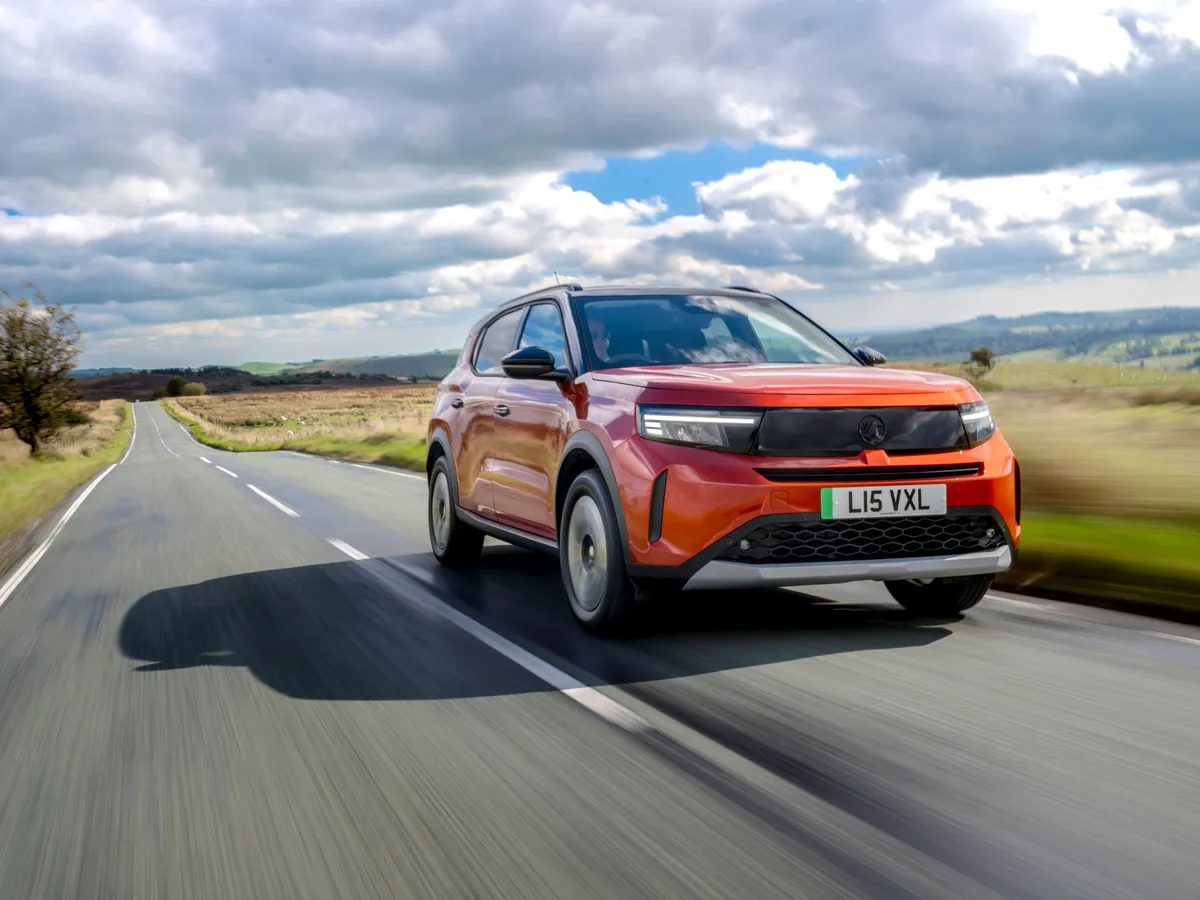Copyright expressandstar

If there’s one thing that 2025 will be remembered for then it was manufacturers leafing through their back catalogues for old model names. The latest badge to come back from the dead is ‘Frontera’, and just like with the ‘Renault 4’ and ‘Ford Capri’, it’s been placed on a car that’s really quite different from the original. The new Frontera is not the rugged, slightly agricultural off-roader that had a 13-year life from 1991 to 2004, but a family-friendly SUV that comes in hybrid and electric forms. Sitting between the Mokka and the Grandland in Vauxhall’s SUV range, the Frontera has value-for-money at its core. Is the appeal more than just skin-deep with an old name, though? We’ve been driving it to find out. We’re focussing on the electric model here for one very good reason. Vauxhall caused eyebrows to raise when it revealed that the EV would cost the same as the hybrid version when it announced prices earlier this year, setting a standard for price parity between powertrains. Since then, however, the Electric Car Grant has come along, with the government deeming the new Frontera worthy of a £1,500 price discount. That means the Frontera Electric is now a whopping £2,360 cheaper than the hybrid model, and, with a starting price of £22,495, it has become one of the cheapest electric SUVs money can buy. It’s all very straightforward. The Frontera Electric gets a 44kWh battery pack that has a claimed range of up to 186 miles, and it’s hooked up to a 111bhp electric motor that powers the front wheels. Maximum DC rapid-charging stands at 100kW, meaning a 20 to 80 per cent top-up takes 26 minutes. If that range is a little too limiting for you (and we can see why that would be the case) then there’s the ‘Extended Range’ version. Don’t get too excited, though, as this version only maxes things out to 54kWh, but the range does lift to a far more usable 253 miles. Trouble is, at £3,500 more than the 44kWh version, it undoes some of the Frontera’s low-price appeal. Pretty adequately, to be perfectly honest. That 111bhp translates to a very leisurely 12.6-second slouch to 60mph, and it certainly feels like it. On motorways and country roads a bit of extra shove would be desirable, but, around town, it’s more than quick enough. In fact, the Frontera feels more at home in urban areas – the supple ride deals well with manhole covers and speed humps, and the light steering is useful. Quicken the pace, and the Frontera’s ride never really settles down, and the numb steering doesn’t give much confidence. Still, the brake regeneration is strong (there’s only one setting – the ‘B’ mode), and gives near one-pedal driving around the city. We were unable to perform an efficiency test, but Vauxhall claims 3.4 miles/kWh, which seems realistic to us. A 160-mile range is probably more likely in colder months. Look really, really hard, and you’ll spot the family resemblance to the Citroen C3 Aircross – they are practically the same car, after all – but most buyers won’t notice nor care. There are the familiar Vauxhall styling tropes like the ‘Vizor’ black panel at the front, and it fits well between the Mokka and Grandland. Interestingly, a £400 Design Pack adds a white painted roof with black roof rails, and white-painted 16-inch wheels, giving a pseudo-Land Rover Defender look. It’s a very modern-day Vauxhall – and that’s a good thing. The Frontera blends a lot of what we’ve already seen with the Astra and Grandland, so it’s a riot of sharp angles and shapes. But, unlike the Mokka or Astra, it’s clear that this interior has been built to a price as you don’t have to look hard for cheap-feeling plastics, and it’s just a symphony of grey and black-coloured materials. Mind you, it is a cheap car, plus the kit list is pretty impressive; as standard there’s a 10-inch touchscreen with wireless Apple CarPlay and Android Auto, a 10-inch digital driver’s display, wireless phone charging, LED headlights, and air conditioning. Usefully, the electric model gets the same 460-litre boot as the hybrid. It’s a good square shape, there’s a handy underfloor compartment, and, when you fold down the back seats, there’s 1,600 litres of space – that’s as much as an Astra Sports Tourer. If you’re familiar with Vauxhall’s trim structure then there will be no surprises with the Frontera. Design kicks things off, but we’d be tempted to pay £2,400 more and go for GS as it swaps the entry-model’s steel wheels for 17-inch alloys and manual air conditioning for climate control, plus gets tinted rear glass and comfy ‘Intelli Seats’ that do special things to your tailbone. Ultimate tops the range and starts at £25,695. It gets heated front seats, a heated steering wheel and heated front windscreen, plus gloss back roof rails, and LED fog lamps. There’s nothing remarkable about the Frontera Electric. It drives adequately, the range of the standard model is nothing to shout about, and it’s easy to see where Vauxhall has saved the pennies. But it is stunningly cheap to buy, and opens up electric motoring to family buyers on a budget like never before. Factor in a practical interior and pretty generous equipment levels, and it’s hard not to be impressed.



